18th Century George III Chinoiserie Japanned Wardrobe, Chippendale Period, C1770
Sold
Request Information
Follow Us
18th Century George III Chinoiserie Japanned Wardrobe, Chippendale Period, C1770
A superb and rare George III solid oak chinoiserie decorated wardrobe or estate cupboard, circa 1770. England
This extraordinary and unusual piece was possibly designed as a campaign piece, for somebody who travelled or simply to negotiate stairs because, despite its scale, it can be totally ‘flat packed’ with ease but when it is assembled, it is as robust and durable as any one-piece wardrobe due to the fantastic design.
The full-length raised and fielded panelled solid oak doors are each beautifully decorated in differing typical chinoiserie scenes incorporating elephants, birds, fishing, insects, trees, flowers, boats, harvests, people and dwellings; Opening to reveal a fitted interior. To the left side, dovetail housed shelves slide in to become part of the superstructure, above three graduating solid oak drawers. The right-hand side is fitted with oak pegs presumably for coats. (An appropriate hanging rail can be fitted on request)
The detachable dental moulded cornice surmounts the wardrobe beautifully which is raised on a detachable moulded base and bracket feet concealing period casters.
Each solid oak well-patinated side is fitted with three tenons to the bottom and three to the top. The tenons slot into the cornice and the base.
The raised and fielded two-piece solid oak back is also beautifully made and slots together with a lap-joint to the centre ensuring that it is sealed. This detail in itself displays that the piece was made with a vast knowledge of cabinetwork and with an understanding. In my opinion, the piece was made in such a way to compensate for the change in climate should it be transported to India or Asia.
Due to this piece being so rare and quite possibly unique, I cannot be certain that the chinoiserie was commissioned when the piece was made in England, circa 1770, though, it could well have been. All I can say is that it was decorated in the late 18th or early 19th centuries. I quite like the suggestion that it could have been decorated in India or Asia and belonged to somebody who was part of the East India Company; the scenes could easily be relating to tea or tobacco plantations in the late 18th century.
Chinoiserie entered European art and decoration in the mid-to-late 17th century with French, English, Dutch and Swedish East India Company ships bringing masses of Chinese and Indian goods into Europe. The popularity of chinoiserie peaked circa 1750 when it was associated with rococo fashion; Thomas Chippendale, Giles Grendey and John Belchier all adopted the fashion.
My notes – It is a charming and original piece of very good colour and is extremely well patinated throughout.
Condition
Good. Wear consistent with age and use.
Dimensions
Height: 215 cm
Width: 132 cm
Depth: 51 cm
PREVIOUSLY SOLD
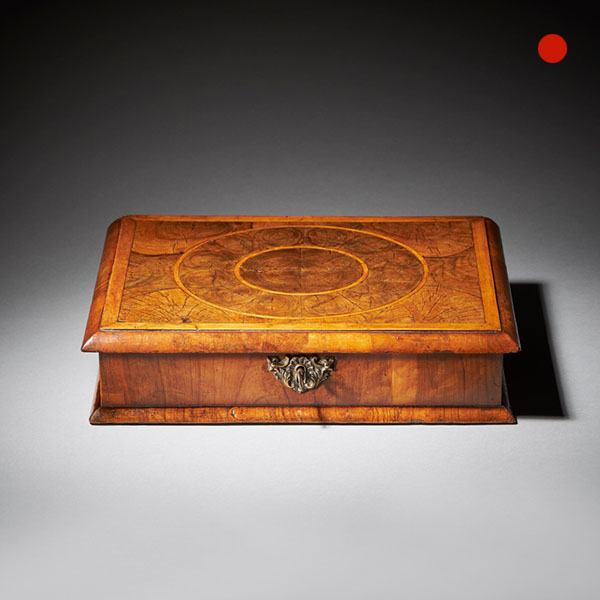
A Fine William and Mary 17th-Century Olive Oyster Lace Box
A Fine William and Mary 17th-Century Olive Oyster Lace Box Sold Follow UsA Fine William and Mary 17th-Century Olive Oyster Lace Box A Fine Late 17th Century Olive Oyster 'Lace Box' of Small Proportions. Circa 1680-1690 England. The...
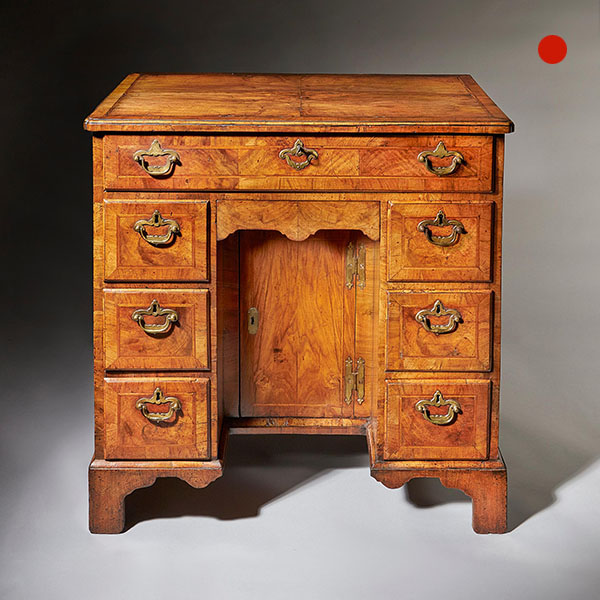
Figured Walnut George II 18th Century Kneehole Desk Attributed to Elizabeth Bell
Figured Walnut George II 18th Century Kneehole Desk Attributed to Elizabeth Bell £7,600 Follow UsFigured Walnut George II 18th Century Kneehole Desk Attributed to Elizabeth Bell A Fine George II Figured Walnut Kneehole Desk Attributed to...

Diminutive 17th century William and Mary Olive Oyster Miniature Chest of Drawers
Diminutive 17th century William and Mary Olive Oyster Miniature Chest of Drawers Sold Follow UsDiminutive 17th century William and Mary Olive Oyster Miniature Chest of Drawers From the reign of King William & Queen Mary (1688-1702)...

George II Burr/Burl Walnut Caddy Topped Chest, circa 1730-1740
George II Burr/Burl Walnut Caddy Topped Chest, circa 1730-1740 SOLD Follow UsGeorge II Burr/Burl Walnut Caddy Topped Chest, circa 1730-1740 An important George II burr walnut caddy topped chest, circa 1730-1740. With firm...
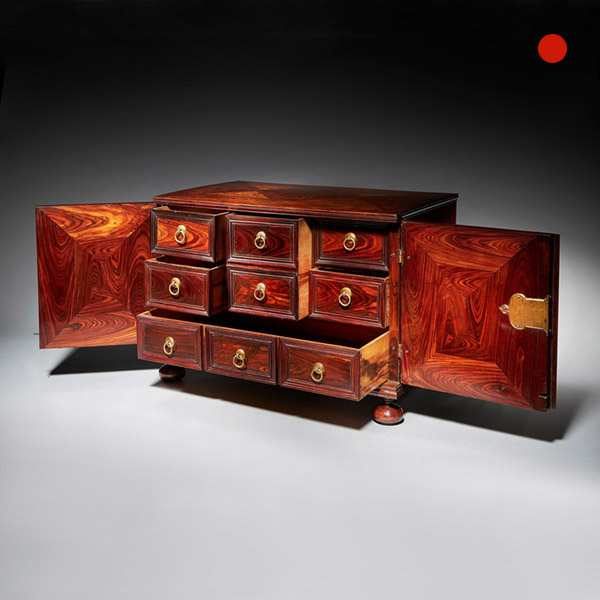
Extremely Rare and Fine Miniature Kingwood Table Cabinet from the Reign of Charles II
Extremely Rare and Fine Miniature Kingwood Table Cabinet from the Reign of Charles SOLD Follow UsExtremely Rare and Fine Miniature Kingwood Table Cabinet from the Reign of Charles Extremely rare and fine miniature kingwood table cabinet from...
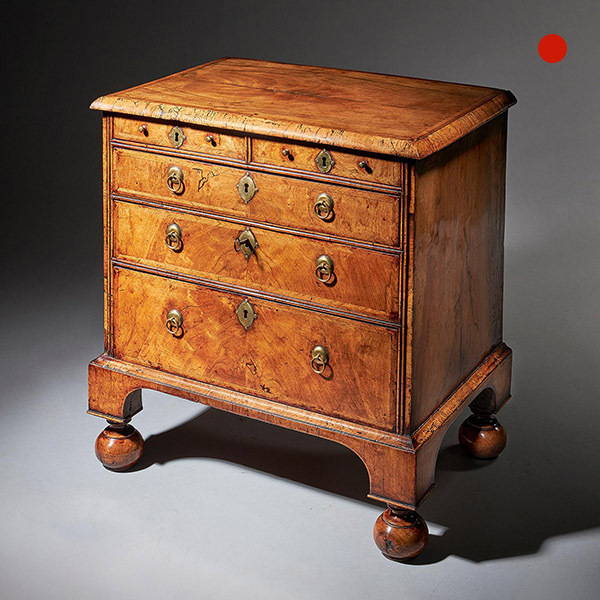
An extremely rare George I walnut chest of small proportions on ball and bracket
An extremely rare George I walnut chest of small proportions on ball and bracket SOLD Follow UsAn extremely rare George I walnut chest of small proportions on ball and bracket The cross-grain moulded and feather banded book-matched top sits...

A Fine William and Mary 17th-Century Olive Oyster Lace Box
A Fine William and Mary 17th-Century Olive Oyster Lace Box Sold Follow UsA Fine William and Mary 17th-Century Olive Oyster Lace Box A Fine Late 17th Century Olive Oyster 'Lace Box' of Small Proportions. Circa 1680-1690 England. The...

Figured Walnut George II 18th Century Kneehole Desk Attributed to Elizabeth Bell
Figured Walnut George II 18th Century Kneehole Desk Attributed to Elizabeth Bell £7,600 Follow UsFigured Walnut George II 18th Century Kneehole Desk Attributed to Elizabeth Bell A Fine George II Figured Walnut Kneehole Desk Attributed to...

Diminutive 17th century William and Mary Olive Oyster Miniature Chest of Drawers
Diminutive 17th century William and Mary Olive Oyster Miniature Chest of Drawers Sold Follow UsDiminutive 17th century William and Mary Olive Oyster Miniature Chest of Drawers From the reign of King William & Queen Mary (1688-1702)...

George II Burr/Burl Walnut Caddy Topped Chest, circa 1730-1740
George II Burr/Burl Walnut Caddy Topped Chest, circa 1730-1740 SOLD Follow UsGeorge II Burr/Burl Walnut Caddy Topped Chest, circa 1730-1740 An important George II burr walnut caddy topped chest, circa 1730-1740. With firm...

Extremely Rare and Fine Miniature Kingwood Table Cabinet from the Reign of Charles II
Extremely Rare and Fine Miniature Kingwood Table Cabinet from the Reign of Charles SOLD Follow UsExtremely Rare and Fine Miniature Kingwood Table Cabinet from the Reign of Charles Extremely rare and fine miniature kingwood table cabinet from...

An extremely rare George I walnut chest of small proportions on ball and bracket
An extremely rare George I walnut chest of small proportions on ball and bracket SOLD Follow UsAn extremely rare George I walnut chest of small proportions on ball and bracket The cross-grain moulded and feather banded book-matched top sits...
YOU MAY ALSO LIKE
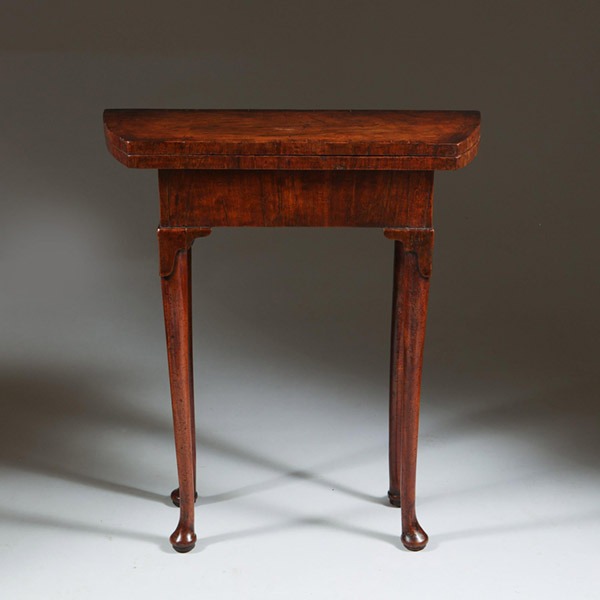
A Unique Early 18th Century Diminutive George I Figured Walnut Bachelors Table
A Unique Early 18th Century Diminutive George I Figured Walnut Bachelors Table £12,800Follow UsA...
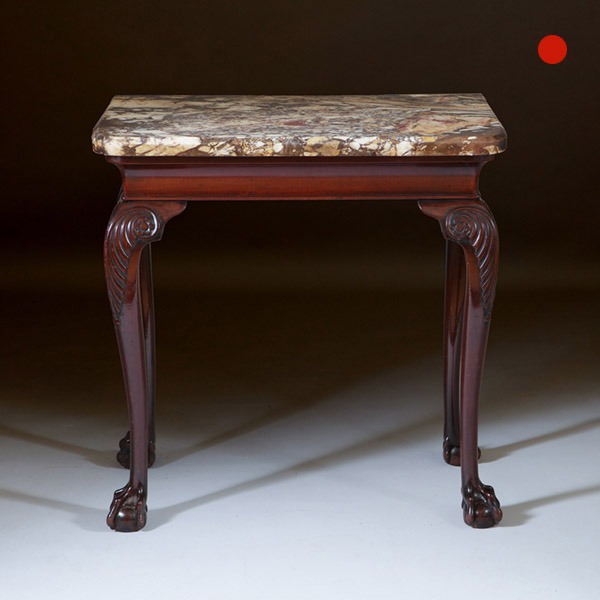
A Fine 18th Century George II Mahogany Marble Topped Console Table, Ireland
A Fine 18th Century George II Mahogany Marble Topped Console Table, Ireland SoldFollow UsA Fine...
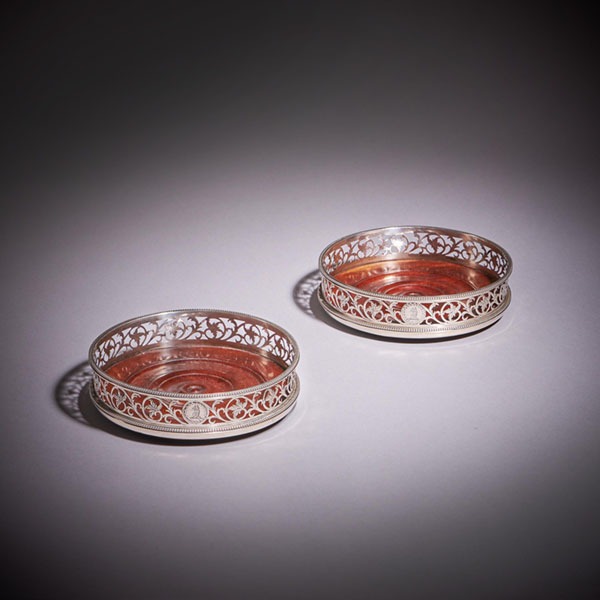
A Fine Pair of 18th Century George III Silver Engraved Open Fret Wine Coasters
A Fine Pair of 18th Century George III Silver Engraved Open Fret Wine Coasters £3,600Follow UsA...
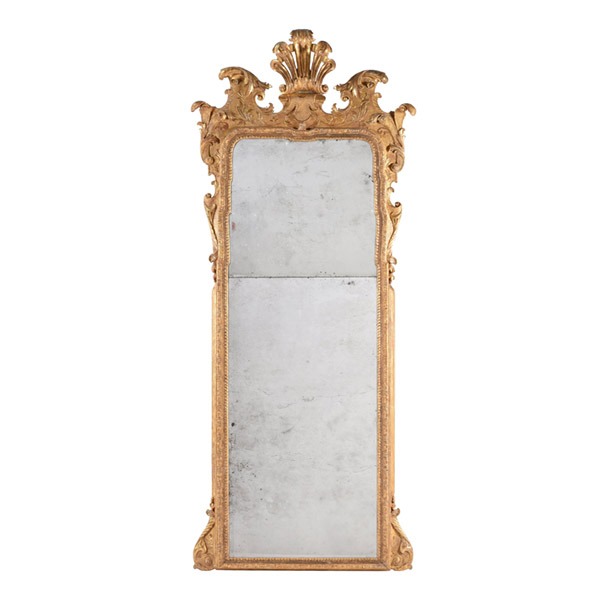
A Large 18th Century George I Gilt-Gesso Pier Glass, Attributed to John Belchier
A Large 18th Century George I Gilt-Gesso Pier Glass, Attributed to John Belchier £42,000Follow UsA...
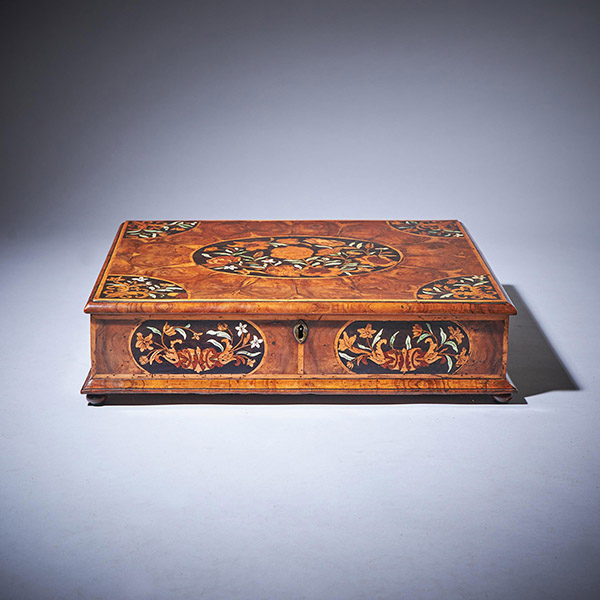
17th Century William and Mary Floral Marquetry Olive Oyster Lace Box, Circa 1685
17th Century William and Mary Floral Marquetry Olive Oyster Lace Box, Circa 1685 £16,000Follow...

A Fine 18th Century George II Figured Walnut Chest on Chest or Tallboy, 1740
A Fine 18th Century George II Figured Walnut Chest on Chest or Tallboy, 1740 £14,000[wpforms_selector form_id="11387" _builder_version="4.22.1" _module_preset="default" custom_margin="-30px||||false|false" hover_enabled="0"...

A Unique Early 18th Century Diminutive George I Figured Walnut Bachelors Table
A Unique Early 18th Century Diminutive George I Figured Walnut Bachelors Table £12,800Follow UsA...

A Fine 18th Century George II Mahogany Marble Topped Console Table, Ireland
A Fine 18th Century George II Mahogany Marble Topped Console Table, Ireland SoldFollow UsA Fine...

A Fine Pair of 18th Century George III Silver Engraved Open Fret Wine Coasters
A Fine Pair of 18th Century George III Silver Engraved Open Fret Wine Coasters £3,600Follow UsA...

A Large 18th Century George I Gilt-Gesso Pier Glass, Attributed to John Belchier
A Large 18th Century George I Gilt-Gesso Pier Glass, Attributed to John Belchier £42,000Follow UsA...

17th Century William and Mary Floral Marquetry Olive Oyster Lace Box, Circa 1685
17th Century William and Mary Floral Marquetry Olive Oyster Lace Box, Circa 1685 £16,000Follow...

A Fine 18th Century George II Figured Walnut Chest on Chest or Tallboy, 1740
A Fine 18th Century George II Figured Walnut Chest on Chest or Tallboy, 1740 £14,000[wpforms_selector form_id="11387" _builder_version="4.22.1" _module_preset="default" custom_margin="-30px||||false|false" hover_enabled="0"...




















